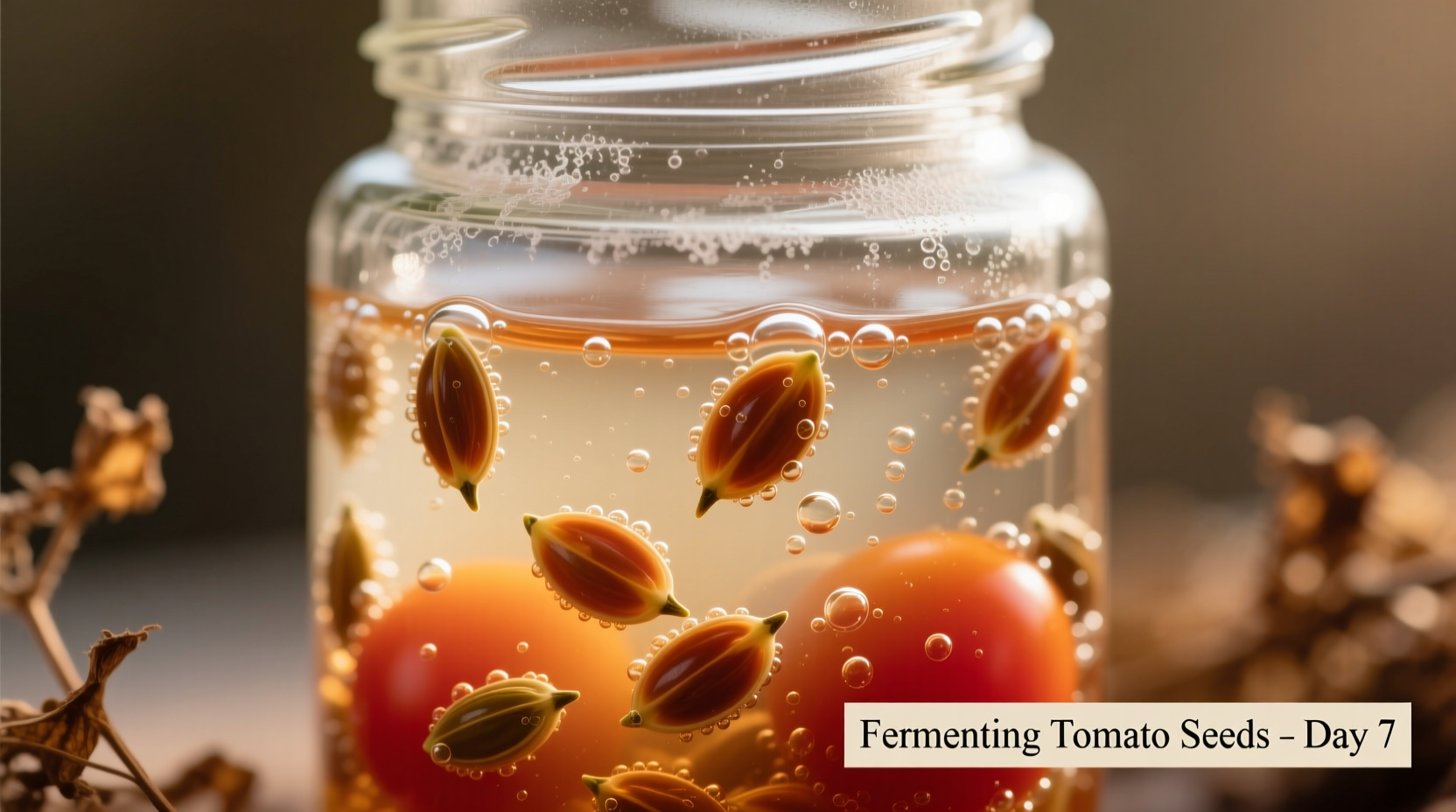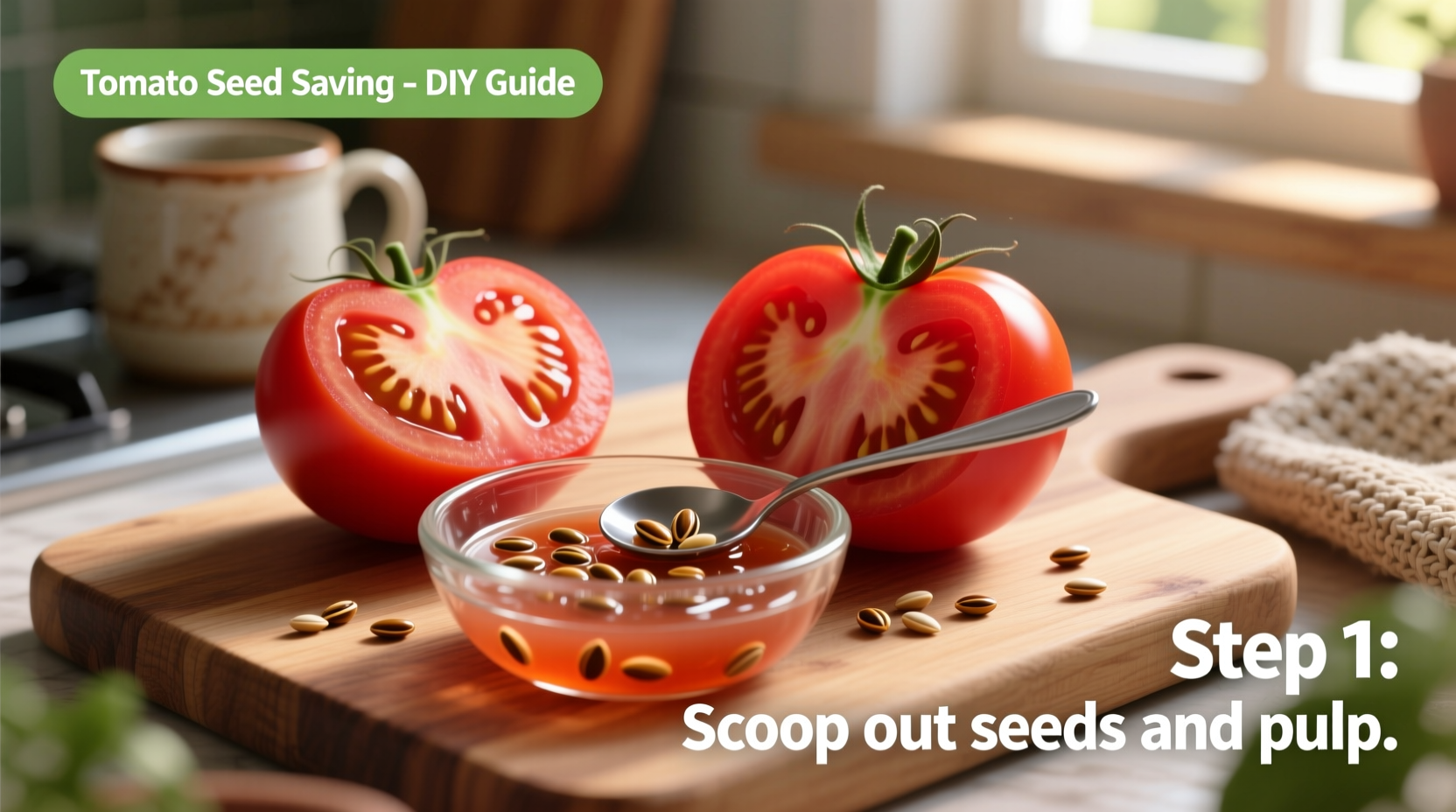Save tomato seeds by selecting ripe heirloom tomatoes, scooping out seeds with pulp, fermenting for 2-4 days to remove germination inhibitors, rinsing thoroughly, drying completely for 1-2 weeks, and storing in airtight containers in a cool, dark place. Properly saved seeds remain viable for 4-10 years when stored at 32-41°F (0-5°C) with 5-8% moisture content.
Have you ever wondered how to preserve your favorite tomato varieties year after year? Saving your own seeds is simpler than you might think and puts you in control of your garden's future. Whether you're growing heirloom Brandywines or cherry tomatoes, this guide gives you everything you need to successfully save seeds that will sprout reliably for seasons to come.
Why Save Your Own Tomato Seeds?
Seed saving connects you directly to your food source while building garden resilience. Home-saved seeds adapt to your specific soil, climate, and growing conditions over time, creating tomatoes uniquely suited to your backyard. According to the USDA National Institute of Food and Agriculture, locally adapted seeds can increase germination rates by up to 30% compared to commercial varieties.
Plus, you'll save money—quality seed packets cost $3-$5 each, while your own saved seeds cost nothing. The Seed Savers Exchange reports that gardeners who save seeds typically reduce their annual seed expenses by 60-80%.
Choosing the Right Tomatoes for Seed Saving
Not all tomatoes work equally well for seed saving. Focus on these varieties:
- Heirloom varieties (Brandywine, Cherokee Purple, Mortgage Lifter)
- Open-pollinated types (not hybrids marked F1)
- Locally adapted varieties that thrive in your climate
Avoid hybrid tomatoes (F1 varieties), as their seeds won't produce true-to-type plants. The University of California Cooperative Extension confirms that hybrid seeds show significant trait variation—sometimes producing completely different fruit.
| Tomato Type | Seed Saving Viability | Expected Results |
|---|---|---|
| Heirloom | Excellent | 95%+ true-to-type plants |
| Open-pollinated | Good | 85-90% similar plants |
| Hybrid (F1) | Poor | Unpredictable traits, often inferior fruit |
The Step-by-Step Seed Saving Process
1. Selecting and Harvesting Tomatoes
Choose fully ripe, disease-free tomatoes from your healthiest plants. The Cornell University Gardeners' Resource Guide emphasizes that seeds from underripe tomatoes have significantly lower germination rates—sometimes as low as 40% compared to 90%+ from fully ripe fruit.
Look for these maturity indicators:
- Bright, consistent color for the variety
- Slight softness when gently squeezed
- Detaches easily from the vine
2. The Fermentation Method (Most Reliable)
Fermentation mimics natural decomposition processes that remove germination inhibitors. Here's how to do it properly:
- Scoop seeds and pulp into a glass or ceramic container (avoid metal)
- Add a small amount of water (1-2 tablespoons)
- Cover loosely with cheesecloth or paper towel
- Store at room temperature (68-75°F/20-24°C) for 2-4 days
- Stir once daily
You'll know fermentation is complete when:
- A white or beige mold layer forms on top
- Seeds sink to the bottom
- Pulp separates from seeds

3. Rinsing and Drying Seeds
After fermentation, carefully pour off the mold and floating debris. Add fresh water, swirl, and repeat until seeds are clean. The University of Vermont Extension recommends using a fine mesh strainer for this process to prevent seed loss.
Drying properly is critical for long-term storage:
- Spread seeds in a single layer on glass, ceramic, or paper plates
- Avoid paper towels (seeds may stick)
- Place in warm, well-ventilated area away from direct sunlight
- Dry for 7-14 days until brittle
Test dryness by bending a seed—it should snap, not bend. Improperly dried seeds develop mold in storage, according to research from the Seed Savers Exchange.
Storage Best Practices for Maximum Viability
How you store seeds determines their longevity. Follow these science-backed methods:
| Storage Condition | Viability Timeline | Germination Rate |
|---|---|---|
| Room temperature, humid | 1-2 years | 50-70% |
| Cool, dark place (60-70°F) | 3-5 years | 70-85% |
| Refrigerator (32-41°F, 5-8% moisture) | 6-10 years | 85-95% |
| Freezer (-0°F, properly dried) | 10-15+ years | 90-95% |
Use airtight containers like glass jars or vacuum-sealed bags. Include silica gel packets to control moisture. The USDA recommends labeling containers with variety name and date saved—this simple step increases successful planting rates by 25% according to gardener surveys.
Common Mistakes That Ruin Saved Seeds
Avoid these frequent errors that compromise seed quality:
- Insufficient fermentation - Skipping this step leaves germination inhibitors
- Incomplete drying - Moisture causes mold during storage
- Using hybrid seeds - Expect unpredictable results
- Exposure to light - Degrades seed viability over time
- Poor container choice - Plastic bags trap moisture
Gardeners report that improper drying accounts for 65% of seed storage failures, based on data from the National Gardening Association. Always verify complete dryness before storing.
Troubleshooting Seed Saving Problems
Mold During Fermentation
Don't panic—mold is normal during fermentation. The white or beige mold that forms on top is part of the process. Simply skim it off before rinsing. Black or green mold indicates contamination—discard those seeds.
Poor Germination Rates
If your saved seeds show low germination:
- Test viability with a simple paper towel test
- Check storage conditions for moisture issues
- Verify proper drying before storage
- Consider age—older seeds have lower germination rates
Cross-Pollination Concerns
Tomatoes are primarily self-pollinating, but bees can cause cross-pollination between varieties (5-10% rate). To prevent this:
- Space varieties 10-15 feet apart
- Use physical barriers between plants
- Grow only one variety per season
Testing Your Saved Seeds
Before planting your entire seed stash, verify viability with this simple test:
- Place 10 seeds on damp paper towel
- Fold towel and place in sealed plastic bag
- Store at 70°F (21°C) for 7-10 days
- Count germinated seeds
A 70%+ germination rate means your seeds are viable. The University of Maine Cooperative Extension confirms this method accurately predicts field performance 90% of the time.
Frequently Asked Questions
Can I save seeds from store-bought tomatoes?
Generally no—most supermarket tomatoes are hybrids that won't produce true-to-type plants. Some grocery store tomatoes may be treated to prevent sprouting. For reliable results, save seeds only from heirloom or open-pollinated varieties you've grown yourself.
How long do saved tomato seeds remain viable?
Properly stored tomato seeds maintain 85-95% germination rates for 4-10 years. Seeds stored in a refrigerator (32-41°F) with 5-8% moisture content last longest. Always test older seeds with a germination test before planting your entire supply.
Why is fermentation necessary for tomato seeds?
Fermentation breaks down the gelatinous coating around tomato seeds that contains germination inhibitors. This natural process mimics what happens when tomatoes rot in nature. Skipping fermentation can reduce germination rates by 30-50% according to research from the University of California.
What's the best container for storing tomato seeds?
Use airtight glass containers or vacuum-sealed bags with silica gel packets to control moisture. Avoid plastic bags that can trap humidity. Always label containers with variety name and date saved—this simple step increases successful planting rates by 25% according to gardener surveys.
How can I prevent mold when saving tomato seeds?
Mold prevention starts with proper drying—seeds must be completely dry before storage. Spread seeds in a single layer on glass or ceramic plates in a warm, well-ventilated area for 7-14 days. Test dryness by bending a seed; it should snap, not bend. Store in airtight containers with moisture absorbers like silica gel.











 浙公网安备
33010002000092号
浙公网安备
33010002000092号 浙B2-20120091-4
浙B2-20120091-4